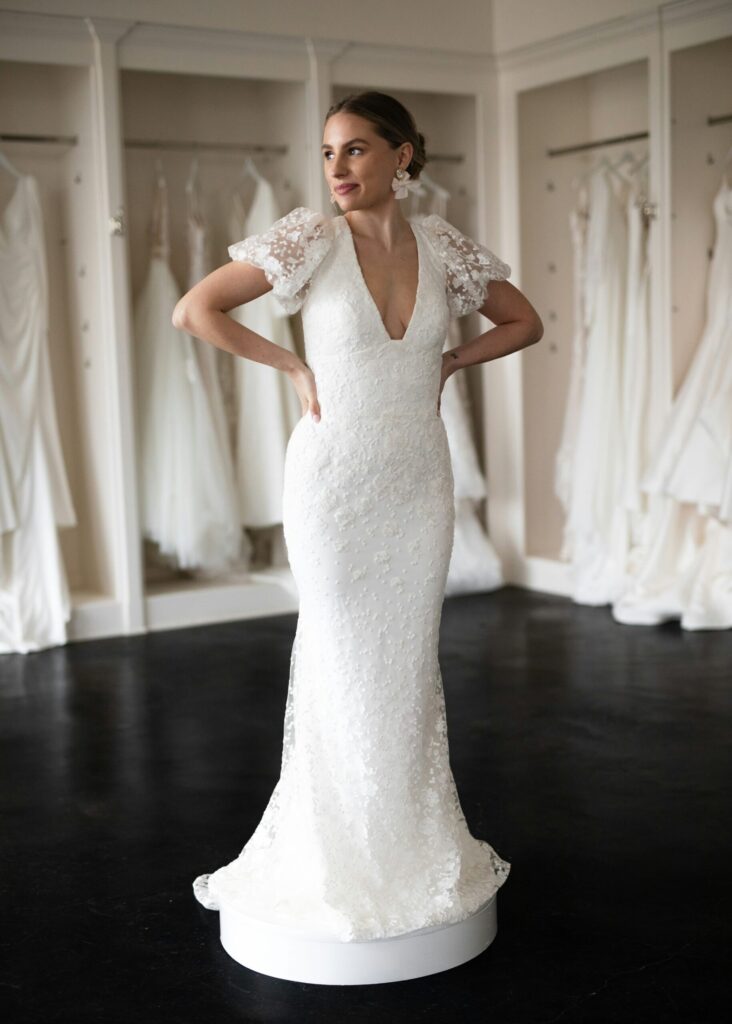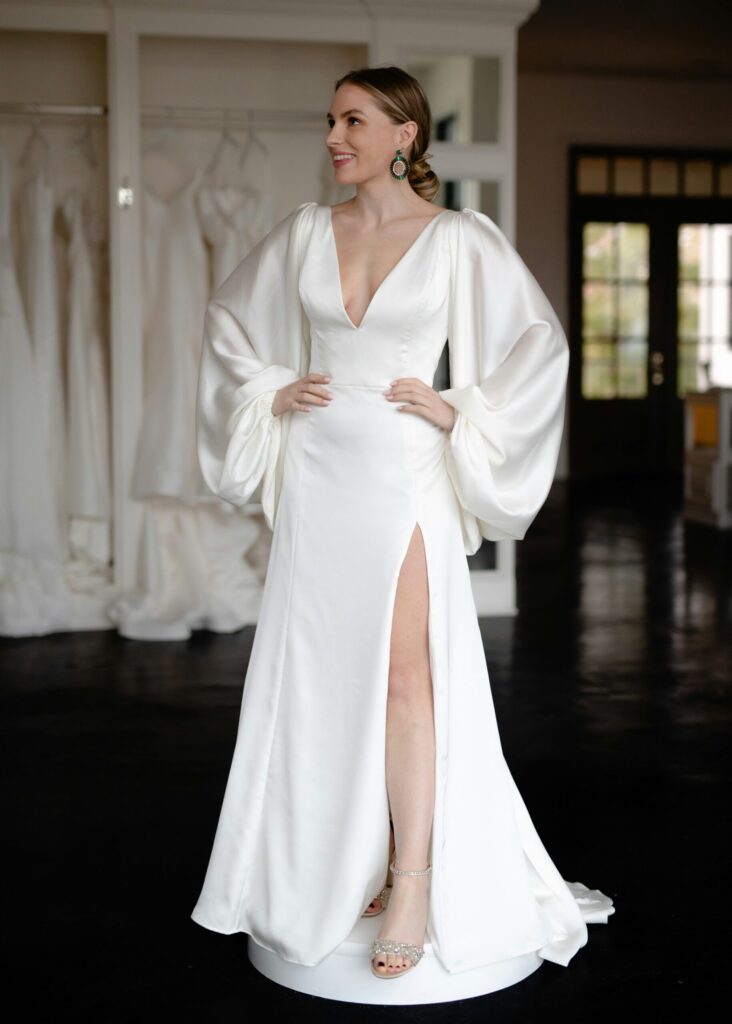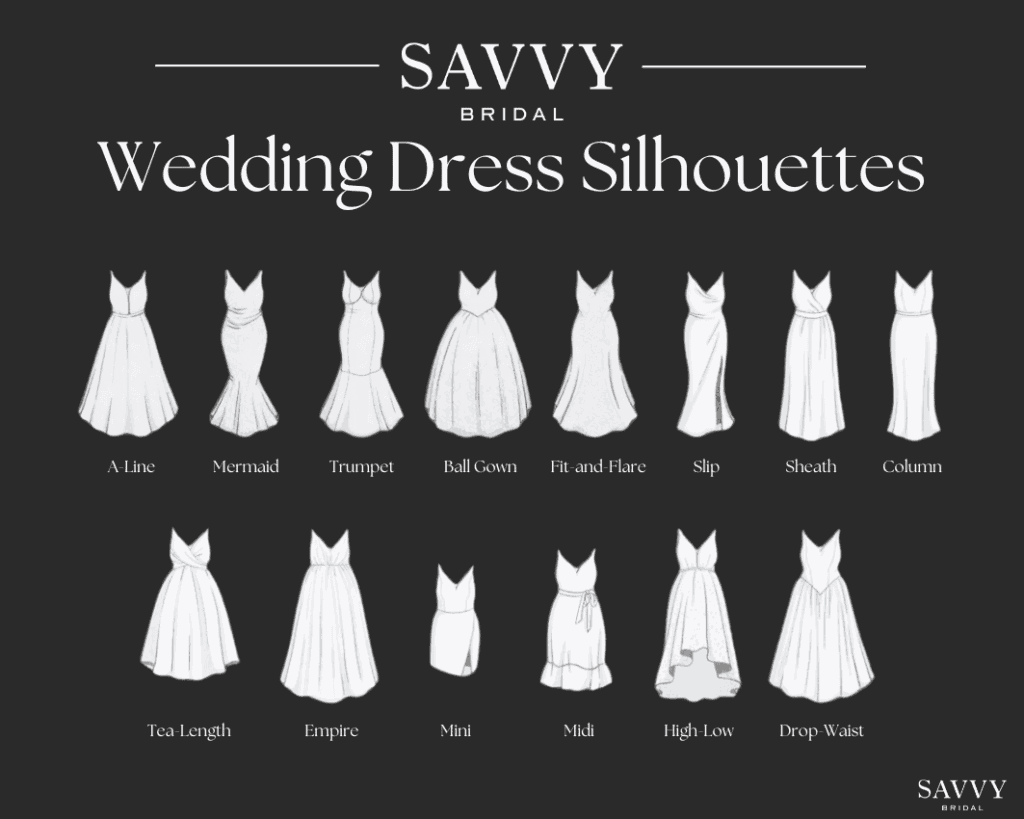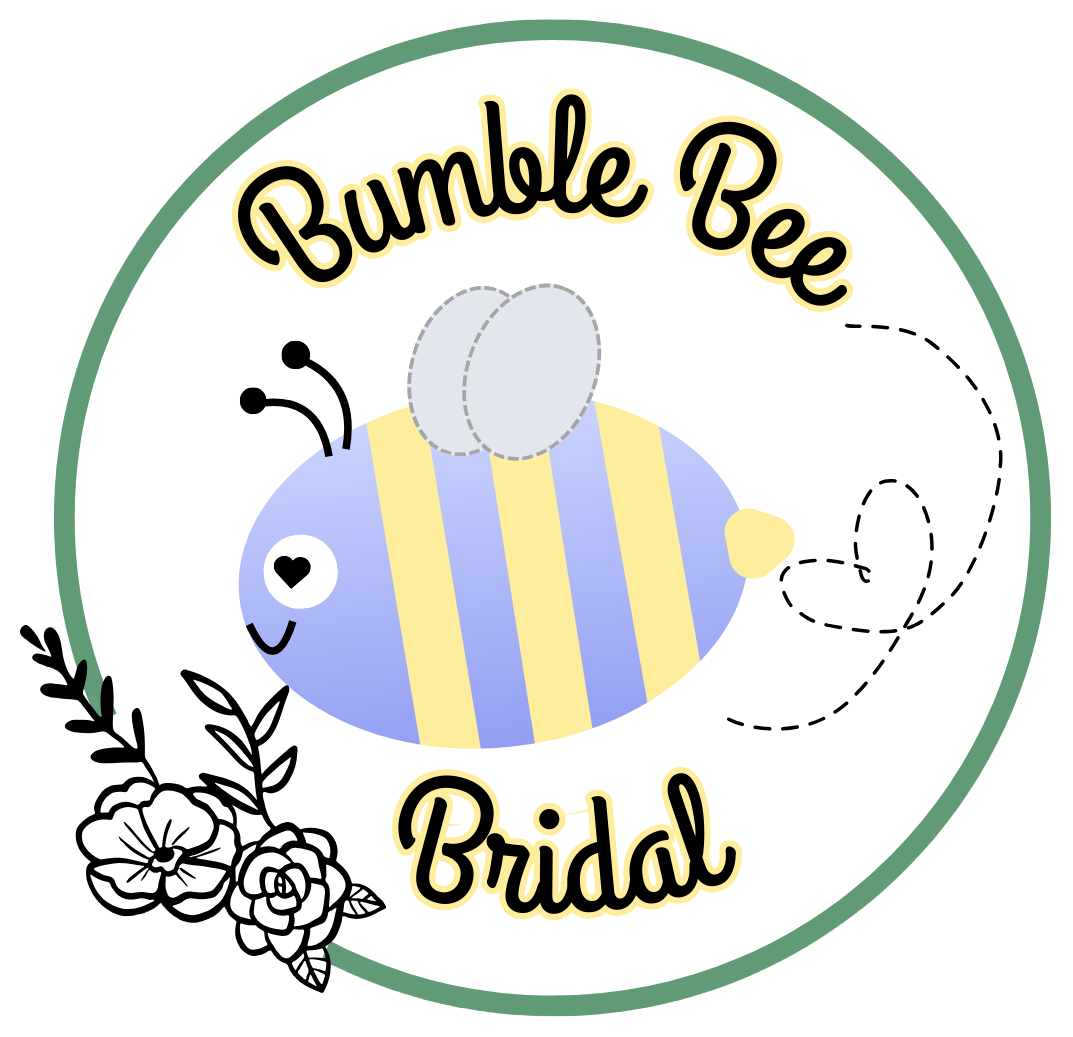
Fitted
Notable Variations
Fit and Flare, Mermaid, Trumpet

Ball Gown
Notable Variations
Ball Gown

A-Line
Notable Variations
A-Line, Modified A-Line
A common misconception with wedding gowns is that there is an endless variety of gowns and while in some ways that is true, ultimately all wedding gowns (excluding some of the couture, meant just for the runway, wedding gowns) are just variations of the same silhouettes with different details. Often times the terminology can be misused which can cause misunderstandings during the search for a bride’s dream wedding gown. While this is not necessarily meant to be a shopping guide, I hope it can clarify what some of the most popular silhouettes are and how they differ. Most of the silhouette variations can be simplified under the categories of Fitted, Ballgown, and A-Line.
Fitted
Fitted has the largest variations of silhouettes. The key feature of a “Fitted” gown is well, that the gown is fitted to the body past the waistline. Below the waistline is when we start to differentiate fitted gowns more. Most people are familiar with the term “Mermaid” and this style is defined from other fitted gowns because the gown is VERY form fitting all the way down to about the knee area where it then fully flares out with a lot of volume. “Trumpet” and “Fit and Flare” are probably the second most common styles. They are essentially progressively looser fitting gowns than “Mermaid” which has very clearly defined shapes. “Column” and “Sheath” is actually also categorized under fitted sometimes. Although they can appear like more of an A-Line gown, the way that the gown is cut is different from an A-Line. Another notable factor is the lack of noticeable consistent volume below the waistline.
Ball Gown
Ball Gown does not really have much in terms of variations but it’s important to differentiate it from A-Line. Ball Gown is essentially a fuller version of A-Line thanks to the crinoline that goes into ballgowns. There are also a lot of common attributes that are found in ballgowns more than A-Line gowns. For example: a Basque waist, corset backing, boning, and tiered skirts. Ball Gowns typically also have the more “princess-y/fairytale” style and elements that brides seek out.
A-Line
A-Line also does not have a ton of variations but it’s still notable different from Fitted and Ball Gown. A-Line gowns are easily defined by a skirt that is in the shape of an A. Even though the example image above shows a slit in the gown, you can still see the A-Line shape. The addition of slits can somewhat warp how people view a silhouette but it’s important to know that slits are not reserved for specific silhouettes. There is something called a “Modified A-Line” or “Soft A-Line” which is essentially an A-Line with less of a visible and distinct waistline. Of course the waistline is still there but those silhouettes have a softer transition between the bodice and skirt.
The graphic below does show off a number of silhouettes that I did not discuss here however that is because they are significantly less common. Some of those styles such as Tea Length, Mini, Midi, and High Low can be commonly found as reception gowns which is a whole can of worms.

